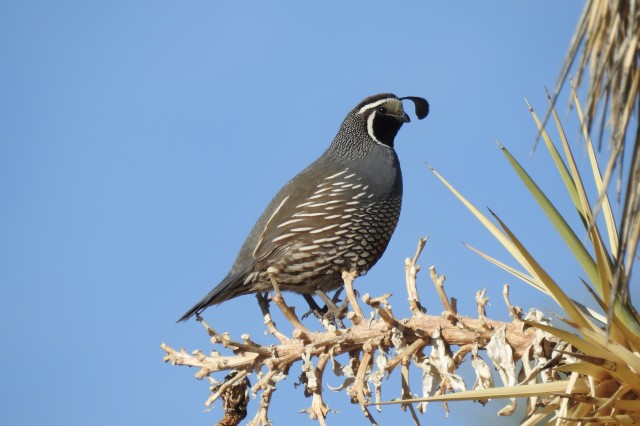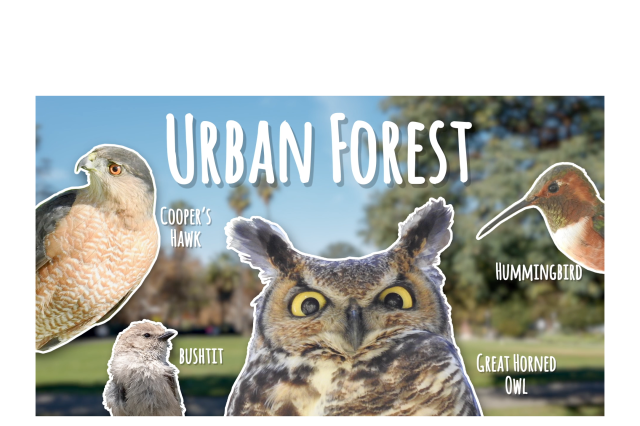Backyard Birding Episode 1: Bird Diversity in Los Angeles County
Los Angeles is the birdiest county in the USA

Los Angeles has 518 species of native birds and ten well-established non-native species, but how do you begin to tell them apart?
Telling a flamingo from a pigeon? No problem. But what about a bird you're seeing for the first time? With so many different birds in the County, it can be overwhelming, but identifying birds by sight is something we can all learn and practice. Here are two big tools to help you get started.
Size & Shape
Take a look at the birds in this image. You may or may not recognize any of them, but all of them are found in Los Angeles County. Try and describe the silhouette of the bird in the center. It's long and slender, distinct from the waterbirds swimming around it. The brown-feathered birds have similar shapes to the mallards sprinkled throughout, but their necks are much longer. Differences in size and shape, and differences in size and shapes of different parts can help you tell birds apart quickly, and the more you practice, the better you'll get.
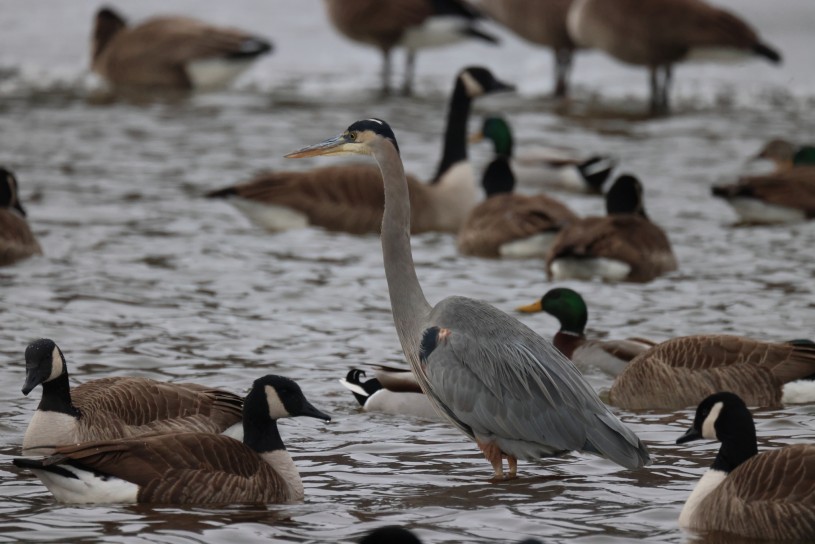
Color pattern
After size and shape, color is the best tool to help you identify a bird. After all, two birds can be very similar in shape and size. All the birds in the below image are similar shapes and sizes (finch-shaped), but their color patterns are distinct. Pay attention to bold and light coloring, bright colors, and overall patterns.
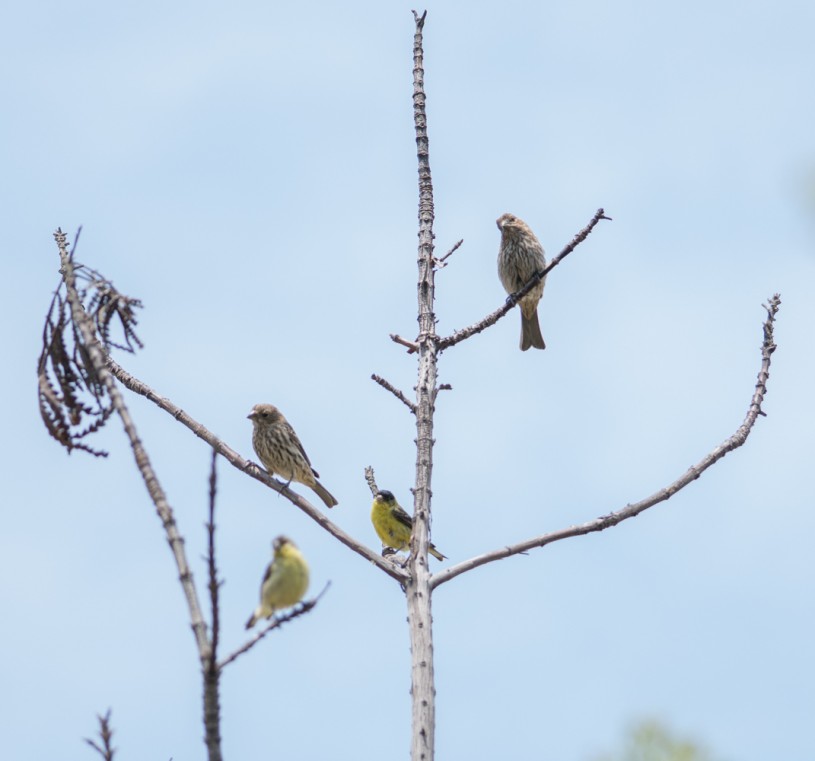
Bird color can tell us more than just what species of bird we're looking at. Color can often reveal whether a bird is male or female, whether it's an adult or juvenile, even if it's looking for a mate.
Beyond color and shape
Take a look a the video clip of the hummingbird below. Can you think of any other tools that might help you identify it if you saw it in the wild?
Bird behavior
You might notice where the bird is: perched among tree branches and not pecking at the ground or soaring overhead. Noting a bird's behavior can help narrow down what it might be even if you're not familiar with it. A tiny blur of wings hovering and darting in the air? It's safe to say it's some kind of hummingbird. Bird behavior can also help you quickly discern between two birds that otherwise look alike. Is it a black phoebe or a dark-eyed junco? If it's pecking on the ground, a junco you've found (probably).
Bird calls
It's hard to miss how chatty this little guy is. Bird calls help expert birders and ornithologists identify birds, and the more you pay attention to birds, the more you'll start to associate them with their calls. Try replaying the above clip with your eyes closed. What do you notice? A three-part, high-pitched buzz. This distinct vocalization sets our Allen's hummingbird apart from the visually similar rufous hummingbird and helps us understand what he might be doing up there (warning another male for buzzing around his turf maybe).
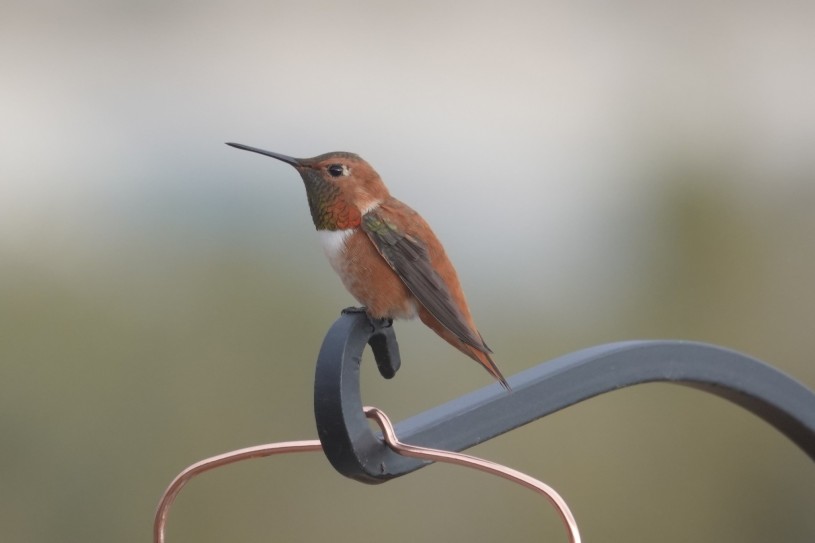
And of course, we're barely scratching the surface. The array of colors, sizes, behaviors and sounds that immediately delight us are only more rewarding the more you look into them.
If you look closely, you'll start to notice just how many different birds you can come across in a normal L.A. day.
Paying attention to birds is incredibly rewarding, especially in U.S.A.'s birdiest county. Keep your eyes open and stay curious, and pretty soon you'll be impressing your friends, family, significant others, and strangers with your bird knowledge. More importantly, you'll be connecting with the natural world all around us. Be sure to share any photographs you take on iNaturalist. You'll be helping birds, the scientists that study them, and experts will help you ID whatever you see flocking in L.A.
